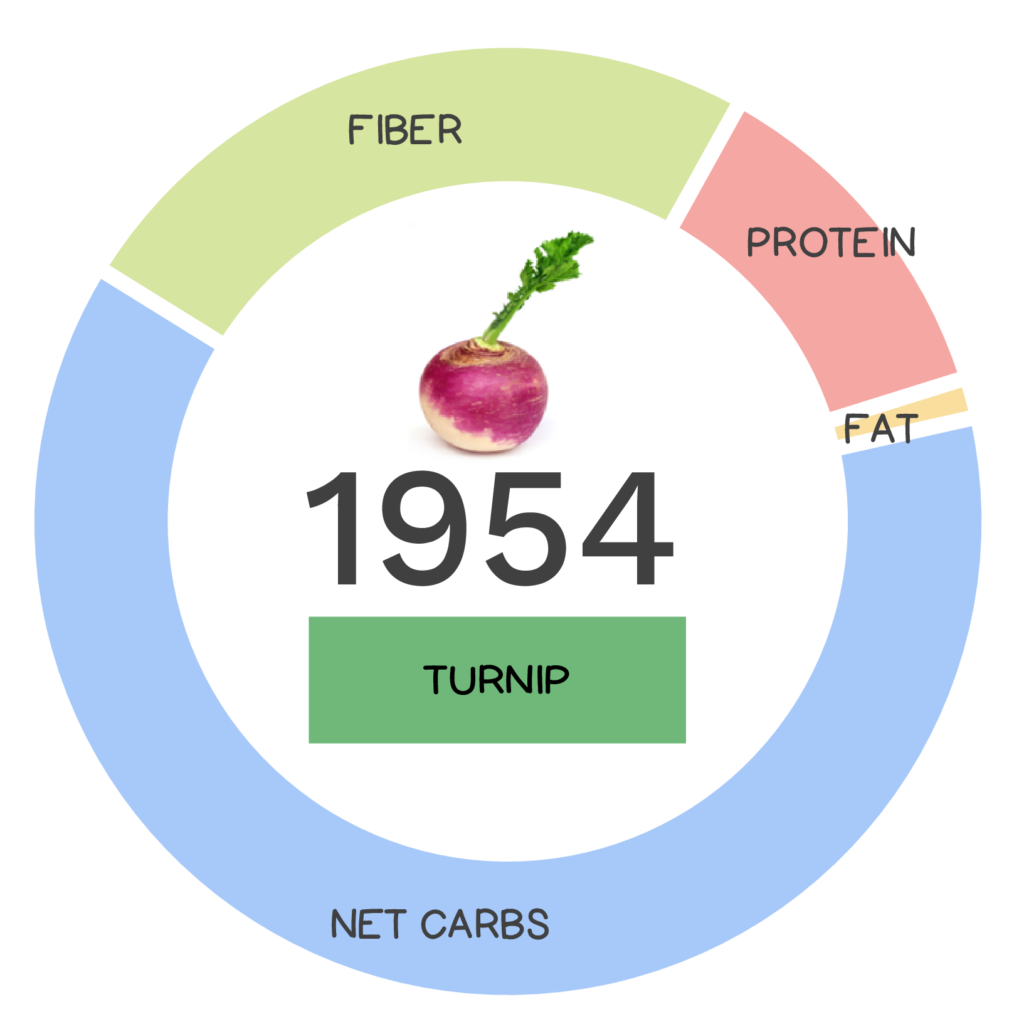
Carving pumpkins is one of the first things that comes to mind when we think of Halloween, but did you know that carving turnips for Halloween is a 19th century Irish and Scottish tradition that pre-dates the pumpkin? Me neither! As a matter of fact, turnips were hollowed out to act as lanterns and carved with grotesque faces to scare off evil spirits and demons. The word ‘jack-o-lantern’ comes from an Irish legend and refers to a drunkard named Jack who bargains with Satan and ends up barred from heaven and hell and doomed to roam the Earth with only a hollowed-out turnip lit by a burning coal to guide his way. Who knew?
There are two main categories of turnip – the Eastern type cultivated as a vegetable and the Western type which is cultivated as an oil source.
Apart from their connection to Halloween (or lack thereof), turnips (Brassica rapa subsp. rapa) are tasty white root vegetables belonging to the cruciferous vegetable family, Brassicaceae, which also includes cabbage, broccoli, cauliflower and kale to name a few. Other family members which are cultivars from the exact same Brassica rapa species as turnip are grown specifically for their leaves and include napa cabbage, bok choy and rapini. Turnip is the oldest cultivar of this species and is indigenous to Europe, Russia, Central Asia and the Near East. This veggie was likely first cultivated in northern Europe and was an important food for the Greeks and Romans. In fact, there are two main categories of turnip – the Eastern type cultivated as a vegetable and the Western type which is cultivated as an oil source (have you ever heard of turnip oil?! Me neither!). Apart from being an important vegetable and oil source, turnip is also used in traditional medicine and turnip greens are sometimes cooked as well, having a similar taste to mustard greens. Ready to learn more, let’s “turn-up” the science on this veggie! (Hyuck)
Learn What Foods to *ADD* to Your Diet
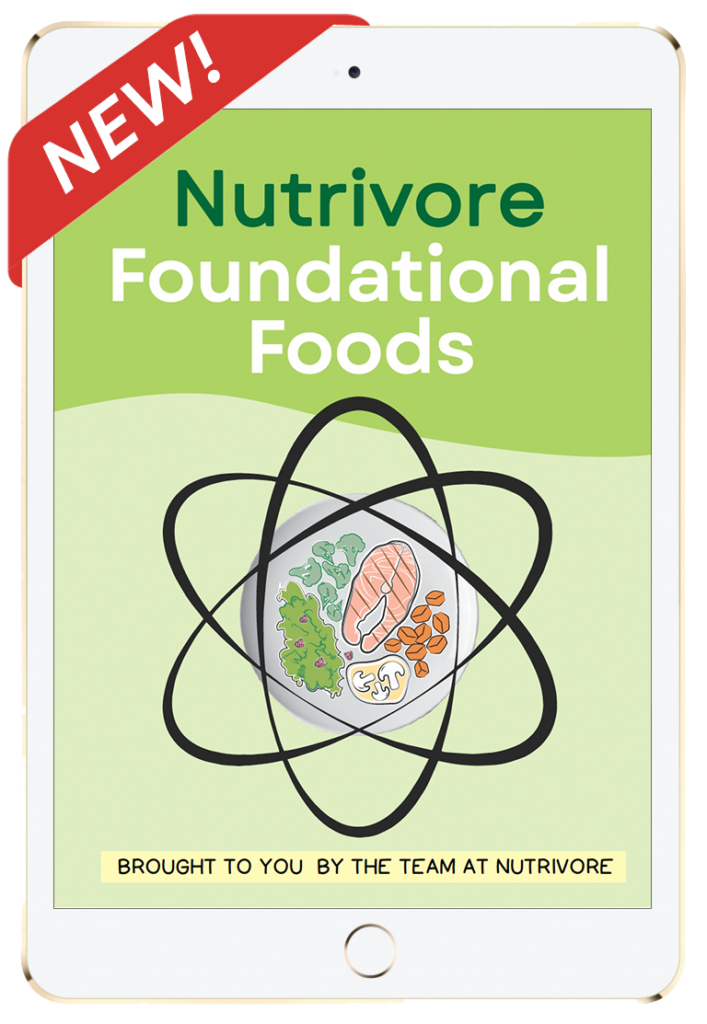
Nutrivore Foundational Foods
Learn what makes the 12 Nutrivore foundational food families nutritionally unique, their health benefits, which options are the most nutrient dense, how much of them to eat, plus various fun facts, practical pointers, and busting of common myths.
This very helpful resource will introduce you to new foods and expand your nutrition knowledge, making food choices easier!
Buy now for instant digital access.
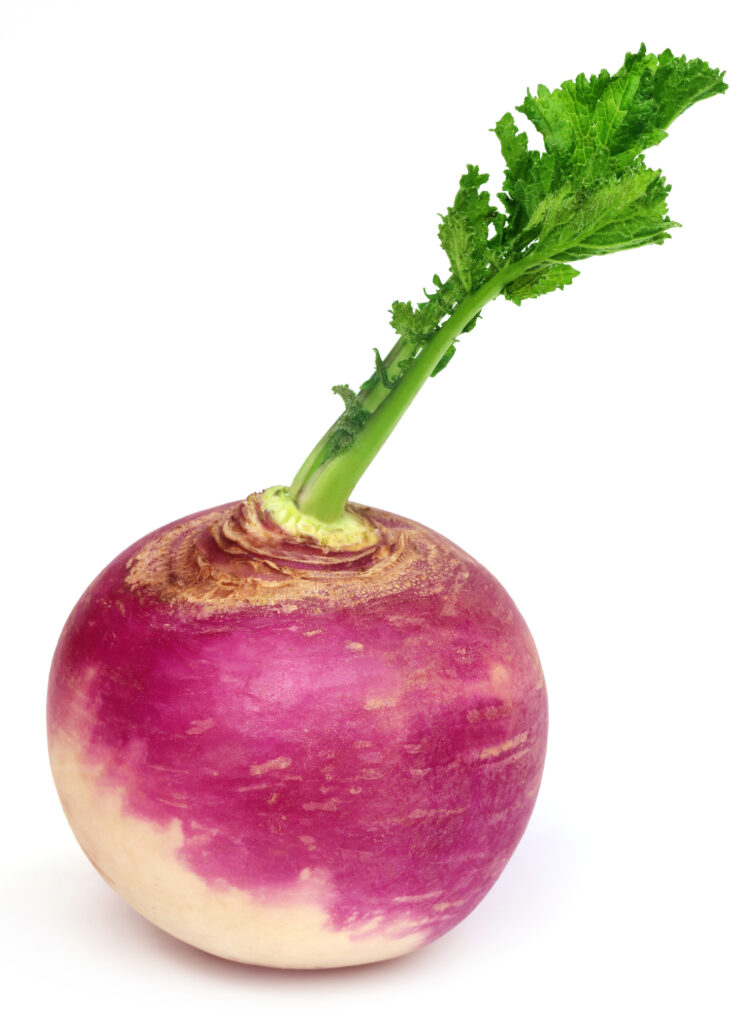
Nutrivore Score for Turnip – 1954
Turnip has a Nutrivore Score of 1954, making it a super nutrient-dense food! Plus, it is a low-carb and low-calorie-density food; the calorie count of turnips is just 36 calories per cup!
Per serving, turnips are a best source (>50% daily value) of glucosinolates; an excellent source (20-50% daily value) of vitamin C; and a good source (10-20% daily value) of copper and polyphenols.
Ditch Diets. Embrace Nutrients. Start with this FREE Guide.
Sign up for the free Nutrivore Newsletter, your weekly, science-backed guide to improving health through nutrient-rich foods — without dieting harder —and get the Beginner’s Guide to Nutrivore delivered straight to your inbox!

Turnip Nutrition Facts
One serving of turnip is standardized to 1 cup, cubed or about 130 grams (4.6 ounces). For reference, a typical medium-sized turnip weighs 122 grams, which is roughly equivalent to 1 serving. When you cook turnip, it reduces in volume: 1 cup raw turnip is equivalent to a little more than 3/4 cup boiled turnip.
Turnip Nutrition Facts Per Serving
| Turnip, raw | Nutrivore Score: 1954 | Nutrient Density: Super! |
|---|---|---|
| Serving Size: 1 cup, cubes (130 grams) | Protein: 1.2 grams | Net Carbohydrates: 6.0 grams |
| Calories: 36 | Total Fat: 0.1 grams | Dietary Fiber: 2.3 grams |
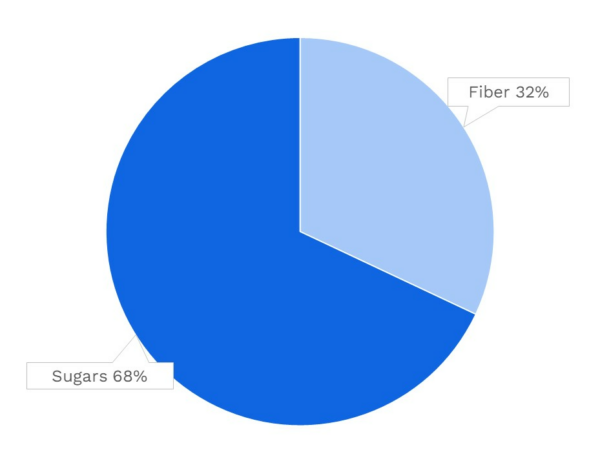
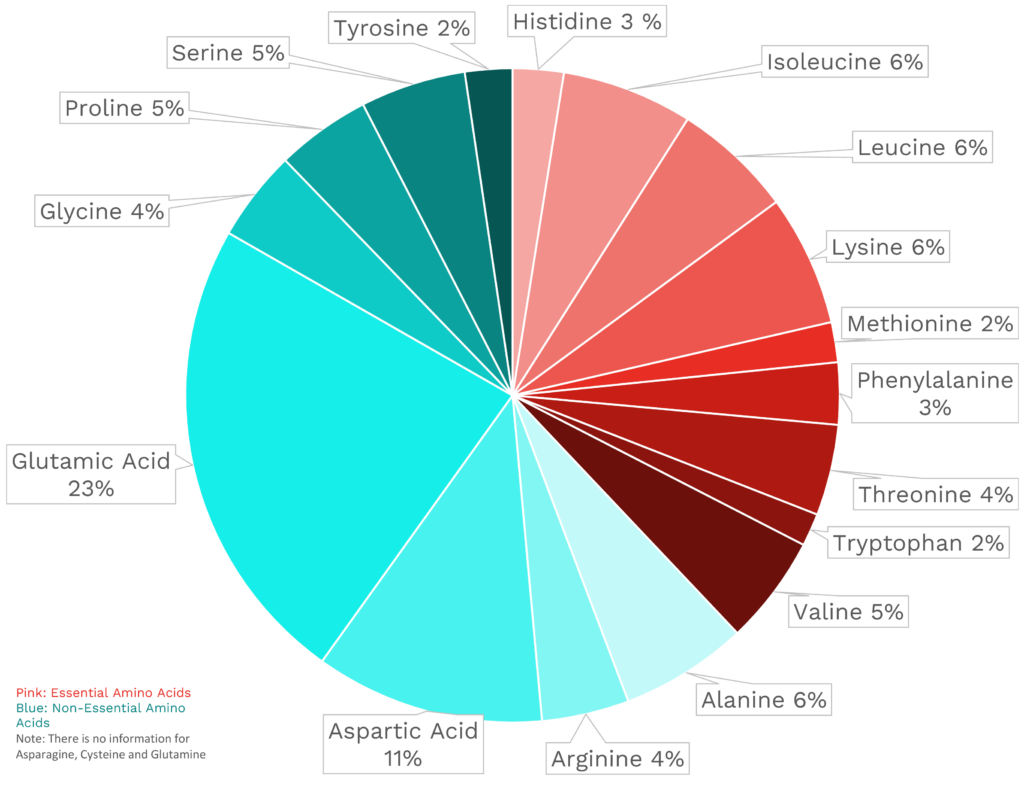
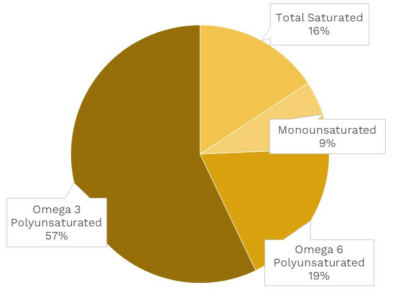
| VITAMINS | ||
|---|---|---|
| Vitamin A | 0.0 μg RAE | 0% DV |
| Vitamin B1 (Thiamin) | 52.0 μg | 4% DV |
| Vitamin B2 (Riboflavin) | 39.0 μg | 3% DV |
| Vitamin B3 (Niacin) | 0.5 mg | 3% DV |
| Vitamin B5 (Pantothenic Acid) | 0.3 mg | 5% DV |
| Vitamin B6 (Pyridoxine) | 117.0 μg | 7% DV |
| Vitamin B7 (Biotin) | 1.4 μg | 5% DV |
| Vitamin B9 (Folate) | 19.5 μg | 5% DV |
| Vitamin B12 (Cobalamin) | 0.0 μg | 0% DV |
| Vitamin C | 27.3 mg | 30% DV |
| Vitamin D (D2 + D3) | 0.0 μg | 0% DV |
| Vitamin E | 0.0 mg | 0% DV |
| Vitamin K | 0.1 μg | 0% DV |
| Choline | 14.4 mg | 3% DV |
| Myo-Inositol | ~ | ~ |
| CoQ10 | ~ | ~ |
| FUNCTIONAL FATS | ||
|---|---|---|
| MUFA | 0.0 g | 0% DV |
| ALA | 52.0 mg | 3% DV |
| EPA + DHA | 0.0 mg | 0% DV |
| CLA | ~ | ~ |
| Linoleic Acid | 0.0 g | 0% DV |
| MCT’s | 0.0 g | ~ |
| MINERALS | ||
|---|---|---|
| Calcium | 39.0 mg | 3% DV |
| Copper | 110.5 μg | 12% DV |
| Iodine | ~ | ~ |
| Iron | 0.4 mg | 2% DV |
| Magnesium | 14.3 mg | 3% DV |
| Manganese | 174.2 μg | 8% DV |
| Phosphorus | 35.1 mg | 3% DV |
| Potassium | 248.3 mg | 5% DV |
| Selenium | 0.9 μg | 2% DV |
| Sodium | 87.1 mg | 4% DV |
| Zinc | 0.4 mg | 3% DV |
| PHYTONUTRIENTS | ||
|---|---|---|
| Carotenoids | 0.0 μg | ~ |
| Polyphenols | 117.0 mg | ~ |
| Phytosterols | 17.2 mg | ~ |
| Glucosinolates | 344.5 mg | ~ |
| Thiosulfinates | ~ | ~ |
| Betalains | ~ | ~ |
| AMINO ACIDS & PEPTIDES | ||
|---|---|---|
| Taurine | ~ | ~ |
| Ergothioneine | ~ | ~ |

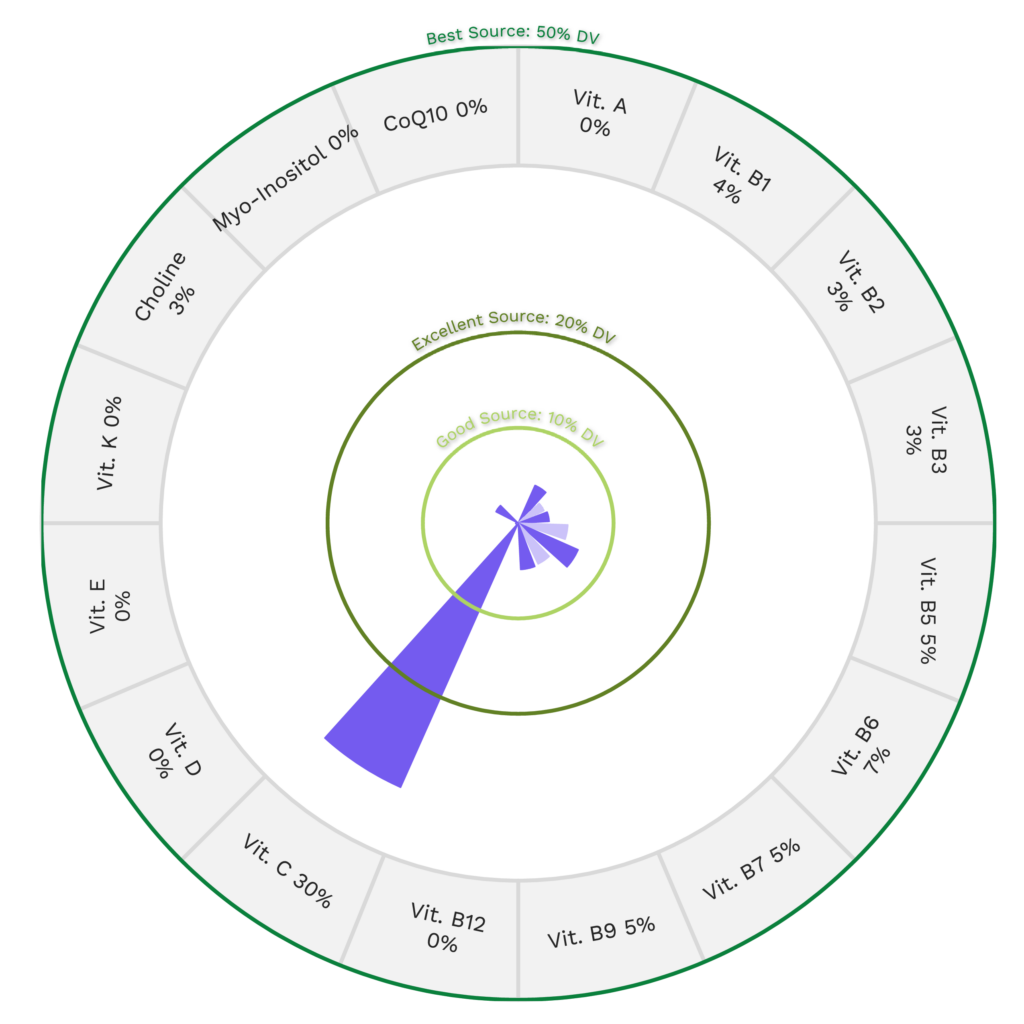
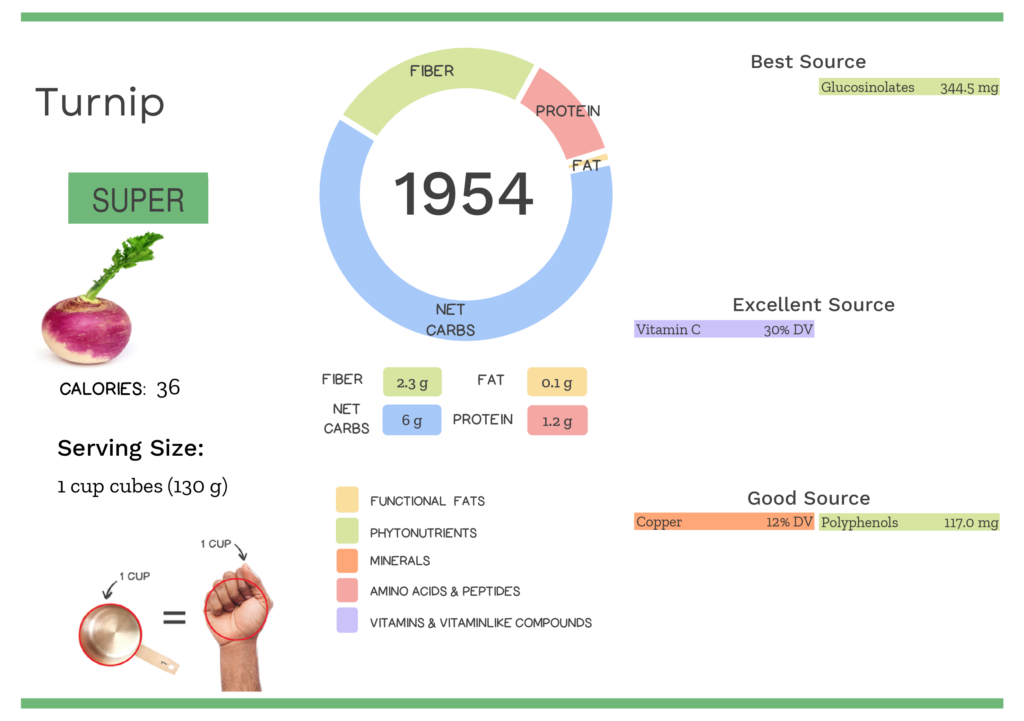
Turnip Nutrition Varies With Cooking and Processing
The Nutrivore Score for turnip varies depending on processing, the method of preparation and the portion of the plant being consumed. Not only are turnips nutritious but their greens are even more nutrient-dense!
| NUTRIVORE SCORE | |
|---|---|
| Turnip greens, raw | 6370 |
| Turnips, cooked, boiled, drained, with salt | 2901 |
| Turnips, cooked, boiled, drained, without salt | 2571 |
| Turnips, frozen, cooked, boiled, drained, with salt | 3391 |
| Turnips, frozen, cooked, boiled, drained, without salt | 3101 |
| Turnips, frozen, unprepared | 3362 |
| Turnips, raw | 1954 |
Surprised that turnips are THAT nutritious? Maybe your friends will be too!
Health Benefits of Turnip Nutrients
Let’s take a closer look at all of the best and excellent source of nutrients found in a 1-cup serving of turnips and see how they benefit our health.
Turnips Provide 344.5 mg of Glucosinolates
Turnips are a phenomenal source of glucosinolates, providing a whopping 344.5 mg of glucosinolates per 1-cup serving!
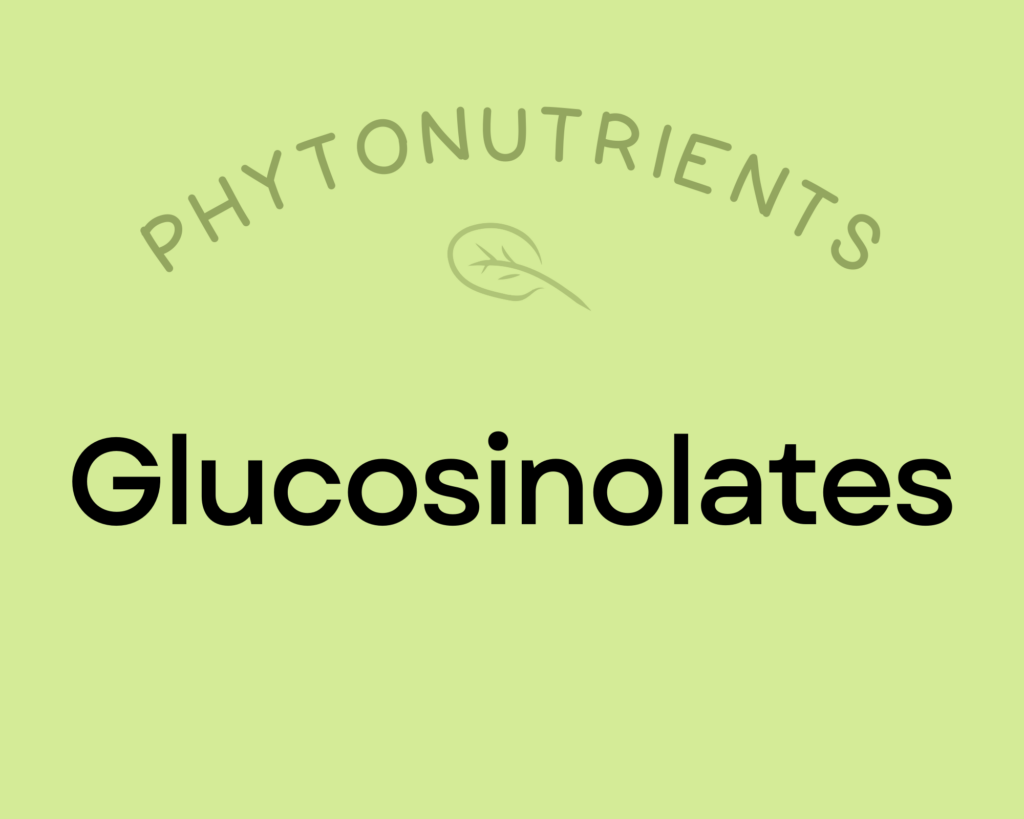
Glucosinolates are well-studied sulfur-containing compounds which break down into bioactive isothiocyanates and indoles when vegetables are damaged (via chewing, cutting, or other processing).
Isothiocyanates (like sulforaphane) are absolute rock stars as far as human health is concerned! Research spanning human epidemiology, animal models, and in vitro experiments show that dietary isothiocyanates are inversely associated with bladder cancer, lung cancer, colon cancer, breast cancer, and pancreatic cancer; some evidence also suggests they may be able to improve ventricular function following heart attacks.
Indoles also have powerful cancer prevention benefits through multiple mechanisms that include modulation of phases I and II detoxification enzymes, regulation of cell cycle arrest, control of cell growth, induction of apoptosis, antioxidant activity, anti-angiogenic effects, and epigenetic regulation. Indole-3-carbinol breaks down into 3,3′-Diindolylmethane (DIM), which is known for its anti-inflammatory, immune system modulating, cancer prevention and estrogen metabolism benefits.
Learn more about glucosinolates here.
Turnips Provide 30% DV Vitamin C
Turnips are also an excellent source of vitamin C, providing 30% of the daily value per 1-cup serving!
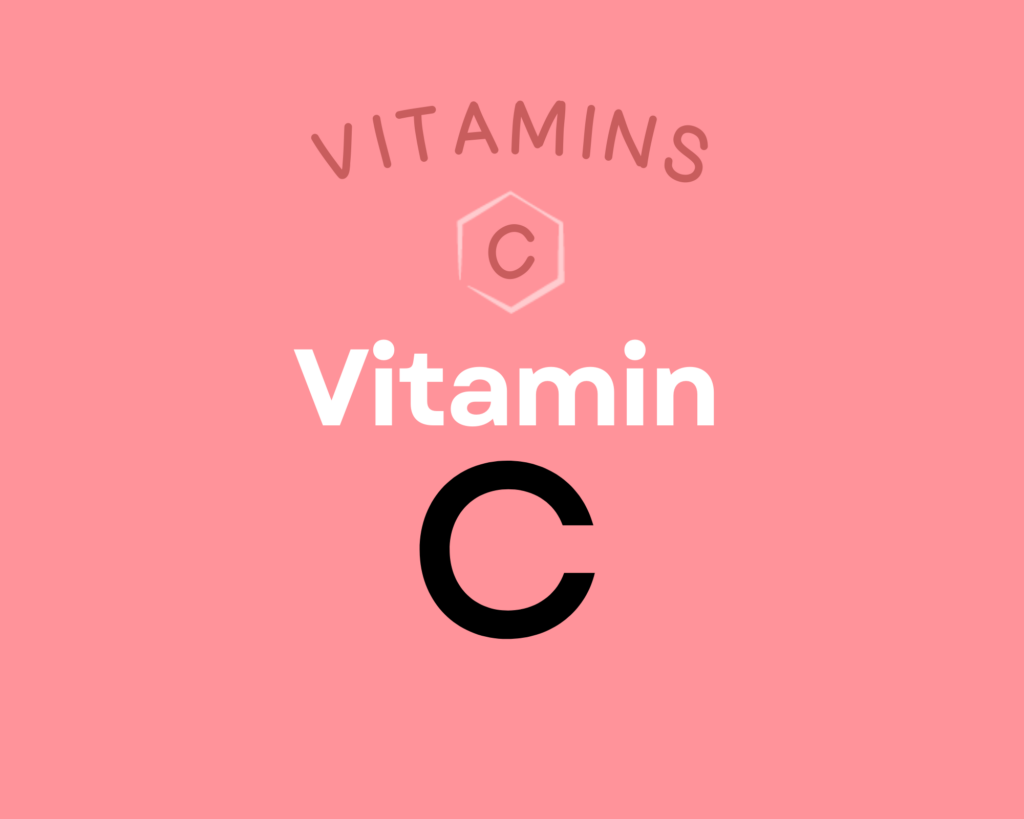
Vitamin C is a water-soluble vitamin that has powerful antioxidant properties (meaning it can help combat oxidative damage from free radicals and reactive oxygen species) and that serves as an enzyme cofactor (meaning it’s needed for enzymes to do their job, for example vitamin C is necessary for collagen synthesis, which is essential for bones, joints, teeth, blood vessels, skin and eyes) and playing important roles in immune system and skin health. Higher intakes of vitamin C are linked to reduced risk of heart disease, some forms of cancer, type 2 diabetes, cataracts, age-related macular degeneration, and gout. Vitamin C can also help regulate the stress response and reduce anxiety, and there’s preliminary evidence that it may also help prevent Alzheimer’s disease. Learn more about vitamin C here.
Want to know the top 500 most nutrient-dense foods?
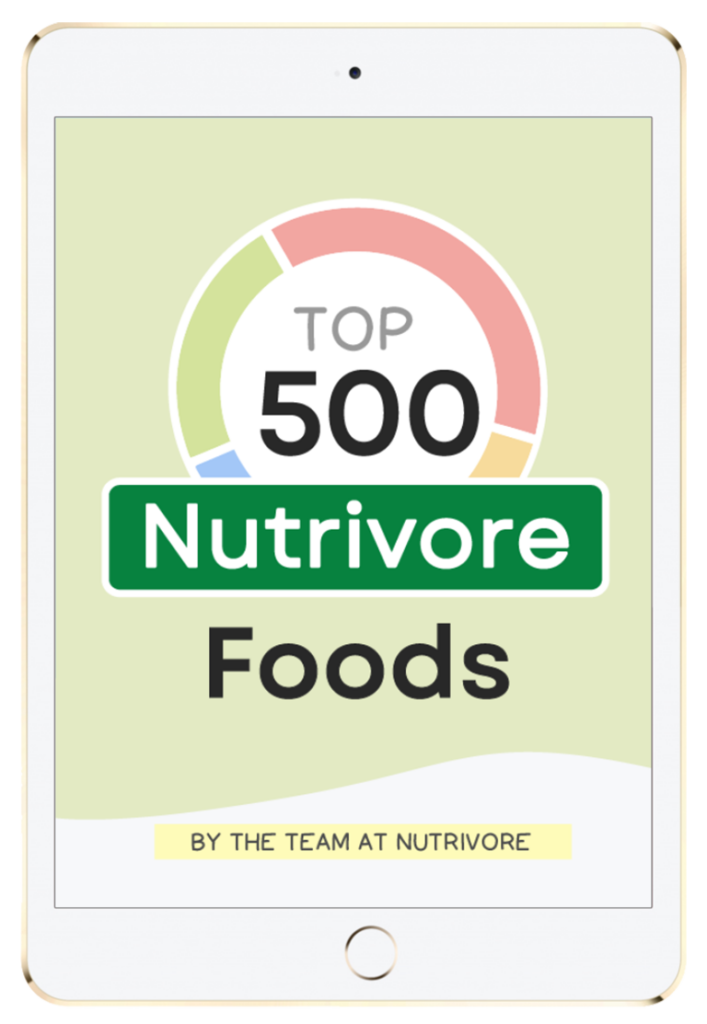
Top 500 Nutrivore Foods
The Top 500 Nutrivore Foods e-book is an amazing reference deck of the top 500 most nutrient-dense foods according to their Nutrivore Score. Think of it as the go-to resource for a super-nerd, to learn more and better understand which foods stand out, and why!
If you are looking for a quick-reference guide to help enhance your diet with nutrients, and dive into the details of your favorite foods, this book is your one-stop-shop!
Buy now for instant digital access.
How Much Turnip Should We Eat Per Day?
You know the old aphorism, a Brassica vegetable a day keeps the doctor away! Wait, that’s not how it goes? It should be!
Every serving of fresh, whole vegetables or fruit we eat daily reduces the risk of all-cause mortality by 5% to 8%, with the greatest risk reduction seen when we consume five or more servings per day. In fact, consuming 800 grams of vegetables and fruits daily reduces all-cause mortality by 31% compared to eating less than 40 grams daily. A 2017 meta-analysis showed that 2.24 million deaths from cardiovascular disease, 660,000 deaths from cancer, and 7.8 million deaths from all causes could be avoided globally each year if everyone consumed 800 grams of veggies and fruits every day.
Eating vegetables and fruit in abundance lowers risk of cancer, cardiovascular disease, type 2 diabetes, obesity, chronic kidney disease, osteoporosis and bone fragility fractures (including hip fracture), cognitive impairment and dementia (including Alzheimer’s disease), neurodegenerative diseases, asthma, allergies, chronic obstructive pulmonary disease, age-related macular degeneration, cataracts, glaucoma, depression, ulcerative colitis and Crohn’s disease, rheumatoid arthritis, inflammatory polyarthritis, non-alcoholic fatty liver disease, acne, seborrheic dermatitis, and lowers markers of inflammation. Learn more in Importance of Vegetables and Fruit.
Covering half of your plate with a variety of vegetables (and three quarters of your plate if your starchy food is a root vegetable or winter squash) at each meal is a simple way to easily achieve the goal of 5 or more servings of vegetables daily.
Studies show that, for every 100 grams of cruciferous veggies (like turnip), we eat daily, all-cause mortality decreases by 24%! In addition, studies also show that, for every 100 grams per day increase in root vegetable intake, there is a 24% reduced risk of all-cause mortality!
Just remember, it’s always best to mix up the veggies you eat day to day (aiming for a wide variety of different vegetables and fruits throughout the week), and turnips definitely have a place at the table.
Easily track your servings of Nutrivore Foundational Foods!

The Nutrivore Weekly Serving Matrix
The Nutrivore Weekly Serving Matrix digital resource is an easy-to-use and flexible weekly checklist designed to help you maximize nutrient-density and meet serving suggestions of Nutrivore foundational foods, all without having to weigh or measure your foods!
Includes a 22-page instructional guide and downloadable interactive guides.
Buy now for instant digital access.
Citations
Expand to see all scientific references for this article.
Fineli Finnish Food Composition Database: Turnip
Gillooly M, Bothwell TH, Torrance JD, MacPhail AP, Derman DP, Bezwoda WR, Mills W, Charlton RW, Mayet F. The effects of organic acids, phytates and polyphenols on the absorption of iron from vegetables. Br J Nutr. 1983 May;49(3):331-42. doi: 10.1079/bjn19830042. PMID: 6860621.
Possenti, M, Baima S, Raffo A, Durazzo A, Giusti AM, Natella F. Glucosinolates in Food. Glucosinolates. 2016. 1-46. doi: 10.1007/978-3-319-26479-0_4-1.
USDA Food Central Database: Turnips, raw
Watanabe T, Kioka M, Fukushima A, Morimoto M, Sawamura H. Biotin content table of select foods and biotin intake in Japanese. Int J Anal Bio-Sci. 2014. Vol 2(4):109-125.


